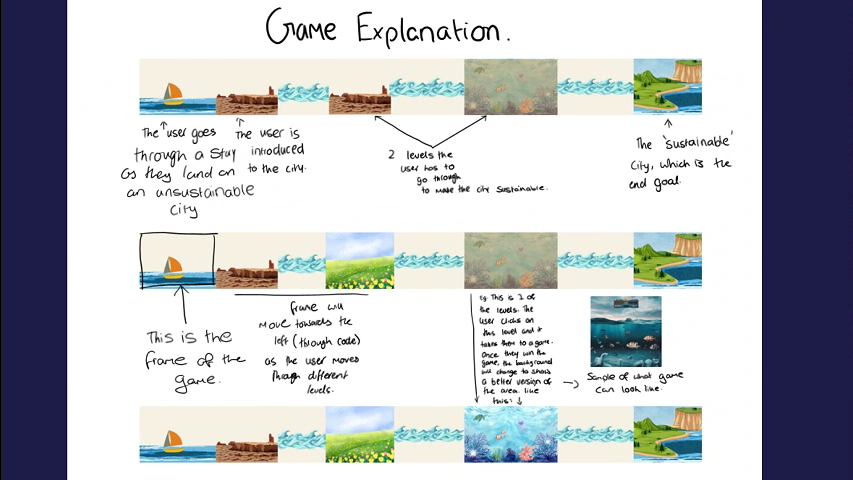Our game addresses environmental challenges, immersing players in levels inspired by real-world sustainability goals. Players engage in roles—such as a diver collecting debris or a forest ranger restoring habitats—gaining knowledge and skills in ecosystem conservation and resource management. Our project encourages community involvement through education and hands-on conservation.
Our game development process utilized various technologies, including AI to assist with the creation of the game in finding bugs. YouTube tutorials were valuable for learning coding techniques and game design principles, guiding us through challenges encountered during development. We implemented a method, utilizing Canva and ideogram AI for graphics. Additionally, community feedback was gathered through others trying out draft stages of our game. Key stages of the project included initial research on our goals, creation of a rough code, graphic designing, testing, and finally the creation of the game (which is still in development slightly), ensuring that each aspect was optimized for both user engagement and education. This approach fostered a strong and interactive gaming experience.
The project effectively conveyed environmental messages, offering actionable solutions for real-world issues. While challenges arose with coding, from bugs to incomplete segments, we successfully developed the gameplay and sprites. Ultimately, the game serves both as an educational tool and to increase awareness about these critical environmental concerns.
By navigating levels based on environmental challenges, players explore complex ecosystem issues, acquiring real-world knowledge on sustainability. Each level inspires meaningful action to protect our planet. I am Groot underscores the importance of conservation, showcasing how individual efforts
